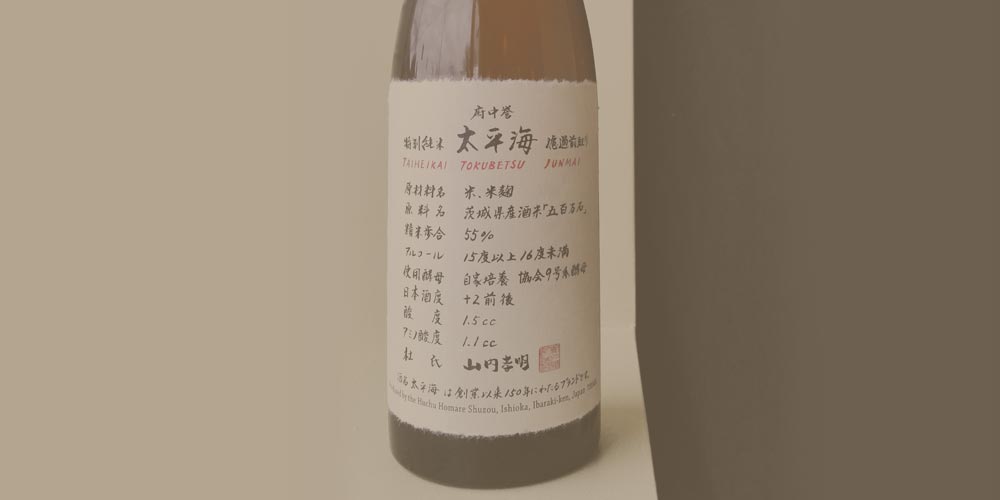Last Updted: 2/2/2021
Taiheikai is a legendary Ibaraki sake, with a seductive and complex aroma and flavor. It’s English name Pacific Ocean is fitting for a sake that’s made near the ocean.
This brew is Huchu Homare’s original brand. Their newer Watari Bune sake gets most of the fame now, but that doesn’t diminish Taiheikai’s reputation.
This post will teach you what Taiheikai tastes like, what to pair it with, and where to find a bottle of your own.
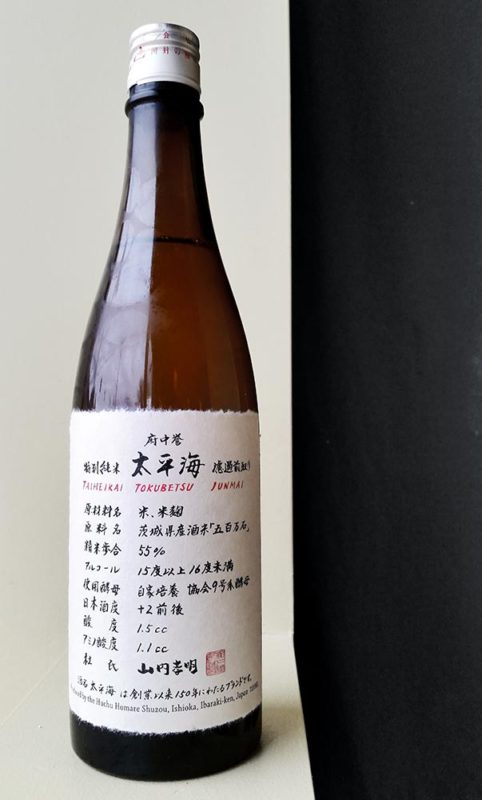
How to Pronounce Taiheikai?
This sake brand looks scary to pronounce, but it’s not so bad.
To American English speakers, Taiheikai sounds like: tie hey kye (like k + eye).
Compare & Shop Online Retailers of Taiheikai Sake
We may earn commissions from qualifying purchases.
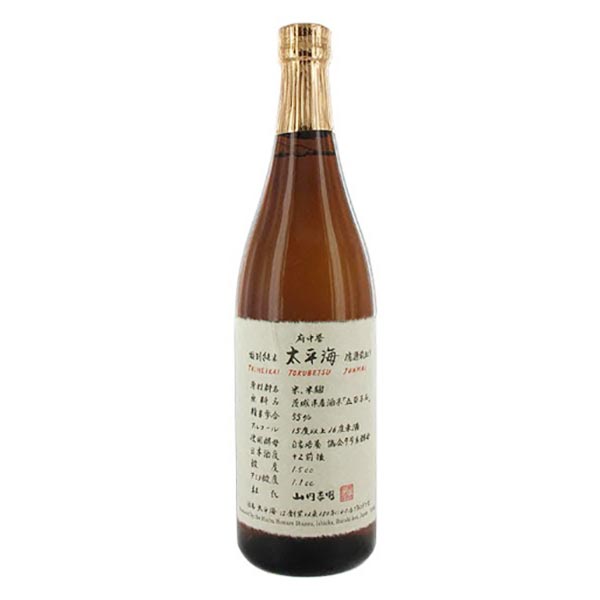
Taiheikai Tasting Notes
Taiheikai Tokubetsu Junmai is an impressive brew with a lot going on. It’s aromatic, medium-bodied, soft, and seamlessly blends a variety of fruit characteristics with nutty, streamed rice umami. Floral and herbaceous too, all without any particular feature that’s forceful.
Specific tasting notes of citrus, melon, mint, steamed rice, and dried flowers.
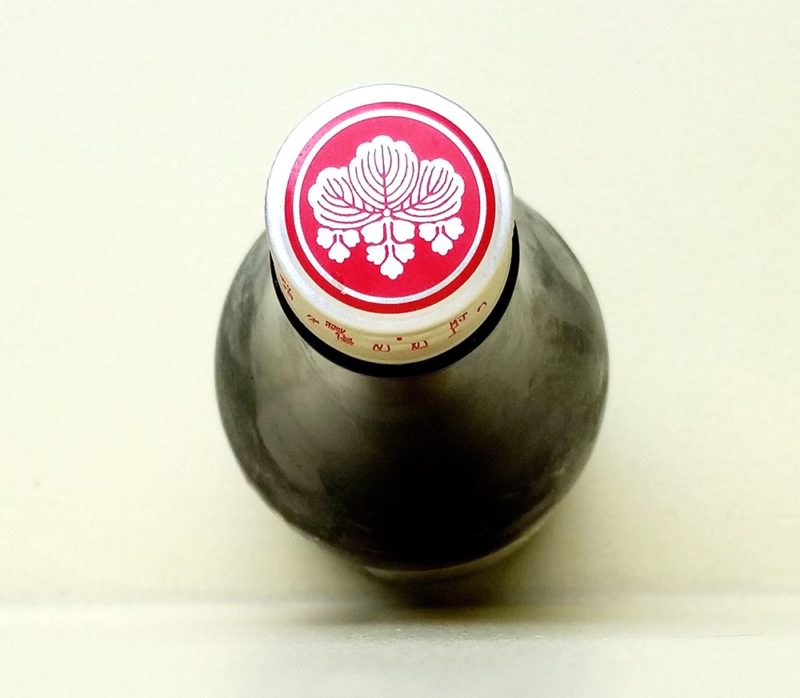
Taiheikai Tokubetsu Junmai Pairing & Service Recommendations
Taiheikai pairs well with a variety of cuisine. The local ankimo, ankou nabe, and soba noodles are obvious foils. Also recommended are sushi, sashimi, all things shellfish (ebi, kani, uni, oysters), maki rolls, shioyaki and robata-grilled seafood and pork.
Best served chilled. White wine glasses really shine with Taiheikai, but guinomi work well too. Smaller o-choko show off the soft texture and will make for a lighter sake.
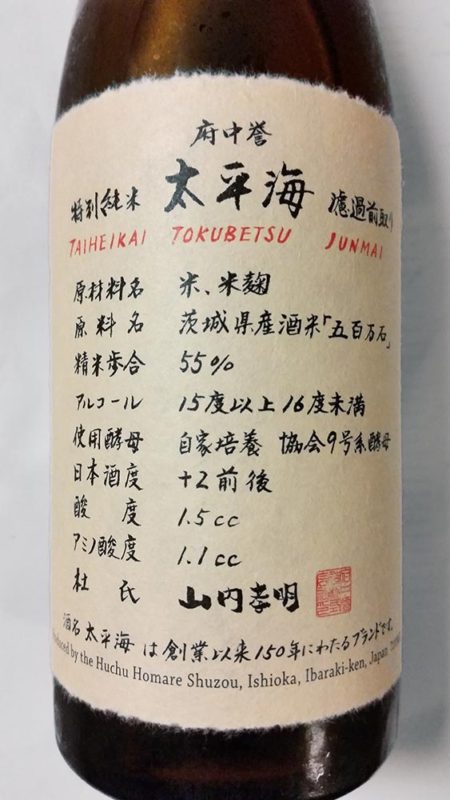
Technical & Product Information
Grade: Tokubetsu Junmai (特別純米醸)
Rice: Gohyakumangoku (五百万石) milled to 55%
Sake Yeast: #9
SMV: +2 Acid: 1.5
Amino Acid: 1.1 ABV: 15-16%
Pasteurization: Namachozo (生貯藏) (once in bottle)
Shubo: Sokujo
Aged: 2-6 mo. in tank
The Huchu Homare Sake Brewery
Brewery: Huchu Homare Shuzo 府中誉 “Pride of Huchu” Location: Ishioka, Ibaraki (茨城県)
EST: 1854 Official Site US Importer– Joto Sake
Huchu Homare is a well-respected brewery from Ibaraki. They were “mentored” by Sudo Honke to a degree, but today, are thoroughly their equal. The brewery’s “Huchu Rokui” spring water is medium-soft in hardness. Produces about 12K cases (12 bottle 720ml, 6 bottle 1800ml) annually. Style: “abundant but balanced fruitiness offset by light nuttiness and earthiness”. Their sake available in the US are typically Namachozo.
Huchu Homare famously revived the heirloom Watari Bune sakamai, and now makes several sake using the characterful grain. They work with several local farmers to grow the fickle rice– about 4ha in all. The brewery mills their rice in-house. This extra step means better control over the process and better results during fermentation.
With a lot of fertile soil, Ibaraki is dominated by agriculture. Ibaraki buckwheat (soba) is considered some of the best in Japan. Persimmon, grapes, pears, and rice are also major crops.
The coast of Ibaraki is famous for monkfish (ankou)– in particular the liver (ankimo), and as ankou-nabe (stew). Using the indigenous Watari Bune grain, Huchu Homare’s sake are well-suited to pairing with these regional dishes. Huchu Homare also recommends Watari Bune with foie gras, pate, risotto, lamb and pork.
Follow the Japanese Bar on Social Media
Connect with our most recent posts, the best Japanese beverage information, and find exclusive promotional offers. Level-up your Japanese sake IQ!
